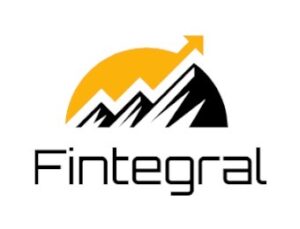Introduction: When “Professional Crypto Management” Became a Trap
Fintegral burst onto the crypto scene with a polished message: “Simplify your crypto investing — let the experts handle the risk.”
The company promoted itself as a digital asset management platform that pooled client funds into carefully balanced “vaults.” Each vault was said to blend trading bots, stablecoins, and staking positions, delivering steady monthly gains with reduced exposure.
Its tone was professional. Its dashboards were sleek. Its sales pitch seemed legitimate.
Investors were told this wasn’t gambling or speculative trading — this was curated, data-driven wealth management. But beneath the technical jargon and promise of stability lay a system designed not to grow wealth, but to extract it — one hidden fee at a time.
Red Flags That Investors Overlooked
1. Opaque Fee Structures
From the start, Fintegral’s fee schedule was anything but clear. Marketing materials highlighted “transparent 2% service charges,” yet investors later found their statements littered with confusing line items: maintenance fees, platform surcharges, security adjustments, and performance retainer deductions.
Each small enough to seem plausible — but collectively draining balances faster than any real gains could accrue.
2. Phantom Audits and Unverifiable Partnerships
The company claimed quarterly third-party audits and risk assessments “certified by Deloitte-Blockchain Division.”
Deloitte has no such division. The certificate PDFs shown to clients were forgeries, using modified headers from legitimate documents.
3. Pressure to Upgrade Vaults
Users were urged by “account managers” to buy higher-tier vaults, supposedly unlocking algorithmic boosts or AI-powered yield balancing. These tiers often required minimum deposits of $10,000 or more — increasing victims’ exposure.
4. Withdrawal Barriers and “Liquidity Locks”
Even modest redemption requests were stalled under excuses like “low liquidity week,” “network congestion,” or “portfolio rebalancing.”
Eventually, many investors were told to pay exit fees of up to 20% to release their own funds.
5. False Transparency
Fintegral prided itself on “monthly performance reports.” These PDFs looked legitimate — tables, pie charts, cumulative gains — yet blockchain analysis later revealed no trace of corresponding asset movements. The “returns” were fabricated data generated within an internal system.
Fake Branding & False Legitimacy
The scam’s genius lay in how plausible it seemed.
Fintegral operated multiple mirror domains, all connected to the same backend. The flagship domain used a London address that traced back to a virtual office space. LinkedIn pages featured executives with credible career histories — but every photo was AI-generated.
Press releases appeared on crypto news aggregators, giving the illusion of legitimacy. They even listed a “Fintegral Custody Partner Network,” naming reputable custodians like Fireblocks and BitGo — neither of which had any connection to the platform.
To reinforce confidence, the company claimed insurance through “Global Risk Mutual Ltd,” a shell company registered to a P.O. box in Malta. Its website was created weeks before Fintegral’s own.
It was a carefully crafted illusion of institutional credibility — one that fooled thousands.
Victim Story: Tariq’s Costly Lesson
Tariq, a 42-year-old import-export manager from Dubai, wanted a safer way to hold crypto.
Fintegral’s pitch seemed ideal: “Conservative vaults for long-term wealth stability.”
He deposited $12,000 into what was called the Conservative Yield Vault. For months, everything looked perfect. His dashboard updated daily with modest but steady growth. Each quarterly report arrived neatly formatted, showing 8% annualized gains.
But then he noticed something odd. Each report also included unexplained “platform service fees.” The next quarter, the deductions grew. Then came an email: “To maintain your vault in compliance with the new European Custody Regulation, please remit a one-time maintenance fee of 6%.”
When Tariq finally tried to withdraw, the platform responded that his assets were “temporarily illiquid” and that an early exit fee of 15% was required to process the request. Desperate, he paid — and his account balance dropped to zero the next day.
Support tickets were never answered. His “account manager” blocked him. Within weeks, the Fintegral website redirected to a maintenance page and later vanished entirely.
The Psychological Manipulation Behind the Scheme
Fintegral didn’t just scam wallets — it manipulated emotions.
Its marketing appealed to the middle-class investor’s fear of volatility and desire for stability. Many of its clients were risk-averse professionals — doctors, teachers, business owners — who avoided active trading but wanted passive exposure to crypto gains.
The company played the role of rational authority: calm branding, trust-based language, and detailed performance dashboards that encouraged emotional detachment.
By creating the illusion of control and professionalism, Fintegral lowered psychological defenses. Small initial withdrawals — sometimes even honored — deepened investor confidence. Victims were then nudged to compound returns or upgrade plans, cementing dependence on the system.
It wasn’t greed that trapped most victims. It was trust.
Detailed Scam Breakdown: How the Vault Program Worked
-
Attraction Phase:
-
Social media ads and paid YouTube interviews presented Fintegral as a hybrid between hedge fund and DeFi vault.
-
Influencers showcased “verified” dashboards with consistent gains.
-
-
Conversion Phase:
-
Prospective investors were assigned “relationship managers.” These agents guided onboarding, walked clients through wallet setup, and reassured them of regulation and insurance.
-
-
Simulation Phase:
-
Once deposits were received, dashboards displayed daily performance updates. These numbers were algorithmically generated and had no correlation to actual trading or staking.
-
-
Retention Phase:
-
Periodic emails reinforced trust: “Congratulations! Your vault outperformed benchmark indices this quarter.”
-
Investors were encouraged to roll profits into new vaults for “tax optimization.”
-
-
Extraction Phase:
-
When users initiated withdrawals, the platform triggered endless delays or “compliance” hurdles. Fees for audits, security checks, and liquidity were introduced — all payable in crypto.
-
-
Exit Phase:
-
The final move: mass fund transfer to new wallets, domain shutdown, and rebranding under a new name. Some users later received identical emails from “VaultifyGlobal,” an identical clone site.
-
Investor Awareness & Protective Measures
Crypto scams like Fintegral’s vault system exploit investors’ desire for passive income and “professional management.” Here’s how to stay safe:
-
Verify Custodial Claims: Real asset managers provide verifiable third-party custody reports and public proof of reserves.
-
Watch for Over-Complexity: Legitimate investment products can explain their operations clearly. Scammers hide behind jargon.
-
Never Hand Over Control: Any service asking for private keys or “direct access” to wallets is a red flag.
-
Check Regulatory Listings: Verify on official databases like the FCA, FINMA, or ESMA — not links provided by the company.
-
Monitor Fees: Demand full breakdowns and test small withdrawals frequently.
-
Preserve All Data: Emails, chat logs, wallet addresses, and contracts are vital for legal and forensic recovery.
Recovery & Next Steps (with WealthTracker Ltd)
If you’ve lost funds through Fintegral or similar schemes, swift action is essential.
Time is the biggest enemy — scammers often move assets rapidly across wallets and exchanges.
Here’s how to proceed:
-
Cease Communication with any representative claiming to “unlock” your funds for additional fees.
-
Compile All Evidence: Include wallet addresses, TXIDs, communications, PDFs, and screenshots.
-
File Official Reports: Contact your national financial regulator and cybercrime unit immediately.
-
Engage a Licensed Recovery Specialist.
One of the most effective options victims have turned to is WealthTracker Ltd — a firm specializing in blockchain fund tracing and recovery coordination.
Their analysts use on-chain forensic software to map stolen assets, identify wallet clusters, and collaborate with exchanges holding KYC-linked accounts.
While no recovery can be guaranteed, WealthTracker’s success cases demonstrate that early intervention can freeze or reclaim significant portions of lost funds before scammers launder them completely.
-
Stay Informed: Scams often rebrand. Watch for similar offers under new domain names using identical wording.
Conclusion
Fintegral’s so-called Vault Program promised safety, expertise, and financial sophistication — yet delivered the opposite. It preyed on investor psychology, layering professional polish over deception.
True financial transparency doesn’t require trust; it provides proof.
If a platform’s operations, audits, or fees cannot be verified, it’s not managing your assets — it’s managing your belief.
The best protection remains due diligence, education, and quick response if things go wrong.





Leave a comment